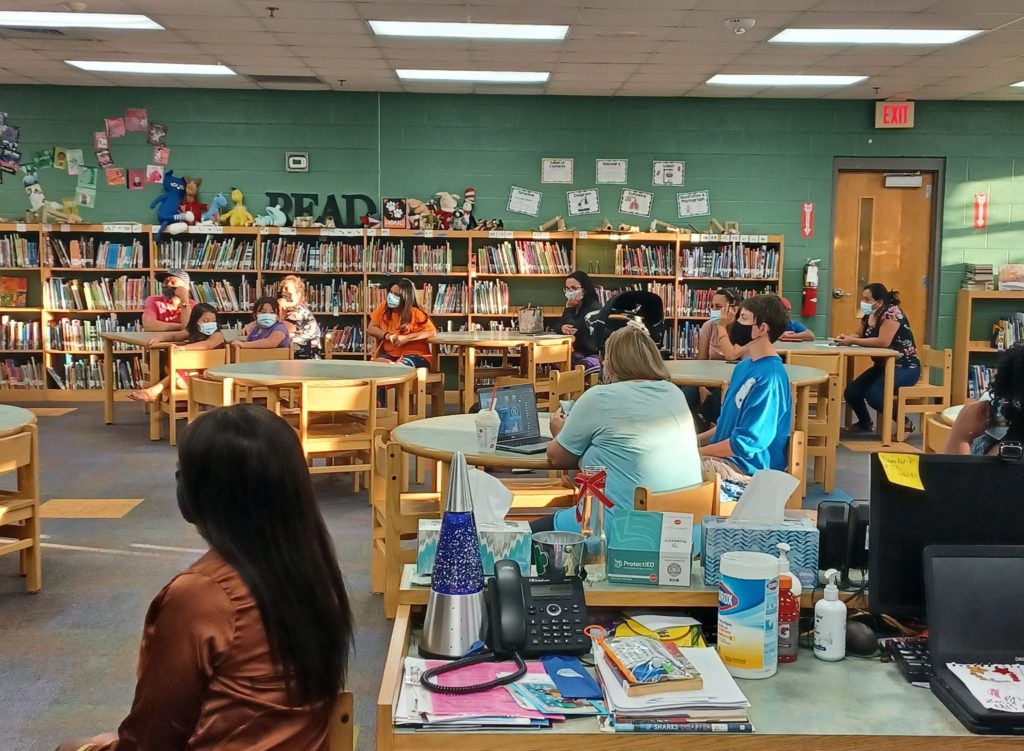Sara Peters, Possip Team Member and former Elementary School Teacher, provides a wholesome breakdown (based on school-level), to create a guide to parent-teacher conferences.
Fall is in the air, the school year is in full swing. It’s also School Conference time. The Fall Conference, for many families, is the first in-depth glance into how their student is progressing academically. Generally, reviewing (beginning of the year) assessment data is a central part of conferences.
So, what are assessments? Why are they important? When do they happen? How do you, as a parent, better understand their significance?
We went straight to the experts to make sense of assessments! We spoke with Stephanie Fuhs, Assistant School Leader at KIPP Jacksonville Public Schools, and Savannah Staley, former High School English Teacher at LEAD Public Schools in Nashville, TN. Before breaking down what to know at each grade level, there are a few important things to know across the board:
- Assessments can look different at each school, each grade, and in each state, but there should be a clear assessment policy
- Assessments are an essential part of ensuring student’s individual needs are being met and critical to strong instruction
- In many instances, the pandemic has interrupted or affected assessments, especially at the state level
- State testing happens in all states at the end of the school year, beginning in Grade 3
To begin, it’s important to understand three basic “types” of assessments:
1️⃣ Diagnostic assessment measure what students know and help teachers tailor instruction to fit student needs and are generally given at the beginning of the year or unit of study.
2️⃣ Summative assessments occur after instruction and are assessments of students’ learning of the material taught.
3️⃣ Formative assessments happen during instruction, are often less formal, and are meant to provide feedback to both teachers and students.
Assessments in Elementary School (Pre-K-5)
If you are a parent/family member of an elementary school student, you can expect:
- Standardized State Assessments. These measure student mastery of the state standards. As a condition of receiving federal funds, states must administer assessments in mathematics and English language arts every year in 3rd through 8th grade (and only once in ninth through 12th grade.) Last year, many states allowed students to “opt out” of these state tests because of the pandemic. It’s important to note that these tests can be stressful especially for younger learners, so don’t hesitate to reach out to your child’s teacher or counselor to see how you can help lessen the stress.
- NWEA (or MAP Assessment/Testing). This is a normed based assessment that measures student achievement against their peers across the country. Schools typically use this to get an understanding of where kids are academically in math, reading, and science. Parents should receive a “Parent Report” to help them understand their student’s scores.
According to Fuhs, who is also a former elementary classroom teacher,
“MAP is generally administered at the beginning, middle, and end of the school year. While it is sometimes used as a ‘screener’ for Gifted/Talented programs, it is not a determinant of promotion to the next grade.”
- At the school and classroom level, in elementary school, you will often see the use of literacy and math assessments, as these important foundational skills are taught and developed. Dibels is a widely used literacy assessment. It is a phonics/reading assessment that measures a student’s ability for foundational reading skills and progresses based on age. DRA is another reading assessment that measures a student’s ability to read fluently and comprehend. These are assessments that students might take more frequently to see how they are progressing (ie, formative assessments).
In terms of Math, it’s important to understand what the school, district, and/or teacher uses to assess learning. Some commonly used assessments include:
- Georgia Numeracy Project (GNP) assesses students’ mathematical thinking and usage of strategies and is generally used at the beginning of the school year.
- Star Math assesses students according to nationally normed data, providing a percentile ranking and approximate grade-level equivalent.
- Freckle assesses students according to their knowledge of grade-level standards. This assessment is meant to be a summative assessment, used at the end of the year.
Assessments in Middle School
If you are a parent/family member of a middle school student, you can expect:
- They will still use Diagnostic, Formative, and Summative Assessments.
- State testing will occur at each grade level in middle school.
- MAP Testing is often still used in middle school for diagnostic purposes.
- At the classroom level, students can expect formative assessments—including verbal “checks” for understanding like “exit tickets”, quizzes or projects. And lastly, you likely remember mid-terms and end-of-unit tests which are commonplace summative assessments.
In middle school, it’s important to note that assessments have a slightly different secondary purpose. Many of the foundational skills assessed in elementary school are already in place for middle schoolers. For students in Grades 6-8, assessments are also used to teach students goal setting and time management as well as empowering students to take an active role in their own learning process.
Assessments in High School
If you are a parent/family member of a high school student, you can expect:
- They will still use Diagnostic, Formative, and Summative Assessments.
- 9th and 10th graders are usually tested at the state level for English Language Arts and math, at least once, per the federal guidelines. For some states, you must pass the state tests in order to be promoted to the next grade or to graduate, so it’s important to understand the implications of the assessments given.
- You can also have School/Classroom-based Assessments and AP (Advanced Placement) Assessments. Students can earn college credit for taking and passing these AP exams. We chatted with former high school teacher Savannah Staley to find out what is important to know for these types of assessments.
Here is what Savannah Staley mentioned about School/Classroom-based assessments and AP (Advanced Placement) Assessments:
“Oftentimes, assessments like tests and quizzes are more about time management and judgment than the actual assessment” offered Staley, who taught English at LEAD Public Schools in Nashville, TN. “Students assume a lot more responsibility for understanding when assessments are, preparing for them, and understanding why they are important.”
Staley provided some helpful tips for both students as parents as they navigate high school assessments.
For students, Staley suggests the following:
- Be Proactive: Classroom assessments should be listed on the Syllabus, so you should know when they are what they will assess.
- Ask if the teacher has a Revision Policy – oftentimes, especially for interim exams, teachers will let students “make-up” a test or gain points back for correcting errors.
- Understand how assessments are weighted— as mentioned above, at the high school level, teachers are looking to help students develop time management skills as well. So if a quiz is only 10% of your final grade, and the end of the unit test is 50% of your final grade, that should dictate how students spend their time.
For parents, Staley suggests the following:
- Know where you can find your student’s grades—increasingly, these are stored online in student/parent portals, but you can always ask the classroom teacher.
- Be an advocate for your student, and encourage your student to advocate for themselves. Stress around assessments is common, and teachers are generally aware of the stress students can feel around big tests, especially as students are reacclimating to the classroom.
- At the high school level, it’s important for you and your student to understand the implications of assessments.
Do you still have questions? Here is an email or call guide to help you ask the right questions to your student’s teacher or guidance counselor!
For Elementary School:
Dear Classroom Teacher or Principal,
My student NAME is in the ____ grade. I have questions about what assessments SCHOOL is using.
What tests does the school use? Why are they important? When are they given? Will I get a copy of my student’s results? If so, what if I don’t understand them?
What tests are used in the classroom to determine reading and math placement? How often are these given?
When is the STATE test given? What is important for me to know?
Thank you!
Parent
At the Middle and High School Level:
Dear Guidance Counselor or Teacher,
My name is _________ and I have a child in ___ grade. I’m wanting to better understand classroom and school-level assessments administered.
When is the state test given? What are the implications of this test?
Does SCHOOL use MAP or something similar? Will I get a parent report?
Can you provide me or my student a calendar for classroom assessments so I can help them be prepared? Can you help me and my student understand the make-up or revision policy?
How can I best support my student as it relates to assessments and testing?
Thank you!
Parent
We hope this guide for parent-teacher conferences benefits parents and teachers in understanding what is to be expected and how to discuss their child’s academic progress!
The post Guide to Parent-Teacher Conferences appeared first on Possip | Parent Engagement Platform | School Feedback App.


 Be present and appreciate the little things
Be present and appreciate the little things  Seeing challenges as opportunities
Seeing challenges as opportunities Be intentional about your inputs
Be intentional about your inputs  Celebrate and encourage positive self talk
Celebrate and encourage positive self talk  Spend time with loved ones and do things you love
Spend time with loved ones and do things you love